Diaries/Art/BBC
Writing diaries (for www.eurotrib.com )
Warning - it can get addictive - we are social animals and relationships are very important (cf BBC series on Happiness) and getting respect is very important - from being a “made man” in the Mafia, to getting an honorary doctorate, or becoming a member of the French Academy. So once one gets some recommendations for one’s diary, one starts to want more. But then, if one gets, say nine, when later one gets ONLY 5 recommendations one starts to think: “What was wrong with THAT one? After all it had politics, history, nice photos, battles and terrible suffering - like Maximus in “Gladiator” one is tempted to demand: “Are you not entertained! Are you not entertained! Is this not why you are here!"” But, hey, 5 recommendations is not to be sneezed at :-)
But then one sees one’s precious diary gradually slip down the list of recommended diaries, then sink down in the recent diaries list - to disappear into oblivion - who looks back at old diaries? Well, there are those like those by Jerome which are about issues central to the nature of the site and which form part of a related, useful set, which will get resurrected when he or someone else does an update on a major issue and includes a set of links to previous diaries on the subject.
Comments
Then there is the question of comments, whether one will get any can sometimes seem puzzling, the first got 30 comments, but, as Whataboutbob said of one of my third diary:
Re: From Bonaparte to Sarkozy
Hmm, top of the rec list and no comments!?!? Well...thank you for this, TW!!
Tue May 8th, 2007
The recent one with 5 recommendations got no comments at all ! Then one sees a diary that just quotes a few recent stats and it gets 30 plus comments ! “And I spent hours on mine - where’s the justice in that?” - one is inclined to rant :-) But then I console myself, that, looked at in another way, it could be seen as a kind of compliment. If 5 thought it worth recommending, but didn’t comment, perhaps in a way this is a recognition of how much work went into it and that it does form a kind of completed whole which deserves reading but doesn’t demand a response.
Flow
Often, when I get started, what I thought might be a few brief remarks, starts to grow as connections suggest themselves and research on the internet throws up bits of serendipity and the diary entry takes on a life of its own. For example I thought this was going to be two short pieces, then they merged and expanded (but got so long I think I'll split them up again).
Then again, as the BBC Happiness programme says, one can get into that state of “flow” where one loses all sense of time, as one is totally immersed in what one is doing. Ironically that occurred in the diary where I was talking about overworking and the value of a “slow” approach to life - but I got so involved in it that I had no idea what time it was and was quite surprised when I finished to see that it was 2 am!
But as the slow philosophy says, it’s not so much about doing nothing, nor just relaxing; it's about doing things one really wants to do and fully enjoying the experience. So it shouldn’t really matter if nobody reads them and they don’t get recommended - but, of course, it does, even though one had a nice time writing it and a good feeling when it was completed.
For me it’s not just therapy; if one is really interested in the subject one wants to communicate it and share one’s enthusiasm - and with redaers NOW. Sartre said, in "For Whom Does One Write?" that: " ... authors and poets are outside of language and are trapped, and states that the writer must write for a public which has the freedom of changing everything." ( http://en.wikipedia.org/wiki/What_is_literature%3F ) - i.e. primarily for one's contemporaries and if posterity is interested that is a bonus.
Unfortunately a lot of literature has become about writing rather than the content; cf. Tom Wolfe’s excellent introduction to the best-selling, highly readable (I was up till 7am one morning) “Bonfire of the Vanities” - 149 review on Amazon, 93 of them 5 star recommendations!
In addition to criticising the over-emphasis on style:
Wolfe [said] that this attention to detail is essential and lamentably absent in most contemporary literature. In an article in Harper's Magazine, Wolfe chastised modern authors for making excursions into mythic fantasy worlds in order to keep the novel fresh and interesting. It is his belief that journalistic research reveals a world more interesting and complex than anything a single author can dream up.
http://en.wikipedia.org/wiki/Harper%27s_Magazine
The introduction discusses the relative lack of interest in current reality and how he had expected some young author to scoop him and write a big novel on life in US at that time. In one of those bits of serendipity, the first review on Amazon mentions his introduction (and provides a link to what was to have been the second short piece):
“Lot of useful reviews here. No one mentions Wolfe's 24-page introduction, 'Stalking the Billion-Footed Beast,' which is excellent in itself as an overview of the alleged death of the novel, The New Journalism, non-fiction v. fiction & his own evolution as a writer. The introduction is worth a read on its own if you're a journalism student, a would-be or actual writer or just interested in the publishing world. As for the rest of the book, it's excellent. Wolfe is a master of the set piece, the extended vignette beautifully observing a situation or person.
... If you enjoy his fiction, his non-fiction is well worth checking out as great examples of very controlled, observant reporting & writing. I particularly enjoyed "From Bauhaus to Our House," an extended essay about modern architecture, and "The Painted Word," ditto on modern art.
http://www.amazon.com/Bonfire-Vanities-Tom-Wolfe/dp/0553275976
Art for form's sake
Which takes me on neatly to my next point - the similar way in which much visual Art has come to be about formal issues, or demonstrations of theoretical concerns. Also the visual Art world, like the literary world, is rather incestuous, but, at the same time, increasingly part of and shaped by the business world. Wolfe’s “The Painted Word” is very relevant:
"In 1975, after having put radical chic and '60s counterculture to the satirical torch, Tom Wolfe turned his attention to the contemporary art world. The patron saint (and resident imp) of New Journalism couldn't have asked for a better subject. Here was a hotbed of pretension, nitwit theorizing, social climbing, and money, money, money - all Wolfe had to do was sharpen his tools and get to work. He did! Much of The Painted Word is a superb burlesque on that modern mating ritual whereby artists get to despise their middle-class audience and accommodate it at the same time.
…
The other bone Wolfe has to pick is with the proliferation of art theory, particularly the sort purveyed by postwar colossi like Harold Rosenberg, Clement Greenberg, and Leo Steinberg. Decades after the heyday of abstract expressionism, these guys make pretty easy targets. What could be more absurd, after all, than endless Jesuitical disputes about the flatness of the picture plane? ..."
James Marcus
http://www.amazon.com/Painted-Word-Tom-Wolfe/dp/0553380656/ref=pd_bbs_sr_1/002-9057639-9446445?ie=UTF8&s=books&qid=1181604525&sr=1-1
BBC hagiography
I have defended the BBC against some criticisms in www.eurotrib.com, but I’m by no means an uncritical consumer of it. For example on Sunday night there was a particularly odious programme in the “Imagination” series. I can’t criticise the whole series, not having seen it. I’ve ticked off someone for criticising a BBC programme after only watching a snippet, so I did, of course, watch all of this programme; though it soon became pretty clear that it was unlikely to get any better. But, gritting my teeth, I watched till the bitter and farcical end. It was the programme on the painter Howard Hodgkin. You can see some examples of his work
here
But, while Hodgkin says that the subjects and hence the titles of his paintings are important, the BBC selection omits the titles - quite appropriately I think. However they are there in the labels of the web images, so this:
is "Undertones of War" - well of course!
My low opinion of his work (the colour is sometimes quite nice) isn’t just ignorance and philistinism on my part; I taught art for years and know lots about the various Art theories of recent years (as well as much earlier ones). Years ago, I was an art student at Camberwell School of Art, London (where Hodgkin had studied some years earlier as it happens). I attended a lecture by a follower of the Greenberg school of art theory (see quotation on "The Painted Word" above) and the head of the painting department asked me what I thought. I said that if the flatness of the picture is SO important, why not just put up blank canvases. I’m sure someone has done this and there are Ad Reinhardt's paintings, cf.:
“Reinhardt is best known for his so-called "black" paintings of the 1960s, which appear at first glance to be simply canvanses painted black but are actually composed of black and nearly black shades. Among many other suggestions, these paintings ask if there can be such a thing as an absolute, even in black, which some viewers may not consider a color at all;”
http://en.wikipedia.org/wiki/Ad_Reinhardt
Really deep huh?
But, decades before, Malevich had done a black painting (and a white one, etc.), and, when criticised, he responded with statement which sums up the Aesthetic approach and his contempt for the world and other people:
“Malevich responded that art can advance and develop for art's sake alone, regardless of its pleasure: art does not need us, and it never needed us since stars first shone in the sky.”
http://en.wikipedia.org/wiki/Kazimir_Malevich
Here's a really exciting one, with a black circle in it - seems a bit of an over-complicated compromise with popularity for him!
Despite the inflated theories, I find a lot of recent art rather boring and unimpressive (thank heavens for the bizarre and fascinating theories of physicists and astronomers, cosmologists), and the general public tends to agree. Of course many of the middle-classes go to galleries and try to look interested, or as if they’ve understood something deep; it’s the new thing to do on Sunday afternoons.
The “Imagination” programme claimed that Hodgkin was the most popular British painter - oh really - with whom? - and since when did popularity count with the Art elite ?
Here's another Hodgkin - guess the subject:
It's: "After Corot" - ah!
Like most people, I’d prefer a Vetriano to a Hodgkin any day e.g.
“Painter whose work tops sales charts lashes out at snobbish elite
David Smith, arts and media correspondent
Sunday January 11, 2004, The Observer
He is Britain's most popular artist, outselling Dali, Monet and Van Gogh. A month ago, he rubbed shoulders with David Beckham at Buckingham Palace as both collected OBEs.
Yet while even the Queen has embraced the phenomenon of Jack Vettriano, the art establishment stands accused of blackballing him and 'running scared' of public opinion.
Vettriano's images of beaches, butlers and lovers have come to adorn everything from posters and cards to mugs and umbrellas, but the nation's major galleries have never displayed a single example of the real thing.
…
In a rare interview, Vettriano said: 'The art world is not a lot to do with art; it's to do with money and power and position. Annually the national galleries are given a budget of taxpayers' money and they should spend it on behalf of the people of Great Britain, but I feel they don't.
... I would rather my paintings sold to ordinary people, rather than being stacked in a store house at the National Gallery.'
Vettriano, 52, has sold more than three million poster reproductions around the world and earns an estimated £500,000 a year from the royalties. The works themselves disappear from public view into the hands of private collectors, with buyers including Hollywood star Jack Nicholson, composer Sir Tim Rice and British actor Robbie Coltrane.”
http://arts.guardian.co.uk/news/story/0,11711,1120728,00.html
More examples here: http://www.enjoyart.com/jack_vettriano.htm
Nicholson and Coltrane seem to be quite smart, independent guys and NOT the type to let elite opinion determine what they like enough to buy. It's no accident that Melvyn Bragg, himself from a poor, northern background, gave TV time to Vetriano - as he and his team have to many other popular artists/performers, ones often scorned by elite arbiters of taste:
“Bob Bee, who has directed and produced Jack Vettriano: The People's Painter for Melvyn Bragg's The South Bank Show, to be broadcast on ITV1 on 21 March, said: 'We wanted to ask Sir Nicholas Serota, director of the Tate, the criteria by which acquisitions are selected and whether he would consider buying a Vettriano. We were told he was busy curating his next exhibition.
'We wanted to ask Sir Timothy Clifford, director of the National Galleries of Scotland, why none of the Scottish galleries will show Scot land and the UK's favourite painter. We were told he was travelling in India and couldn't comment.“
http://arts.guardian.co.uk/news/story/0,11711,1120728,00.html
Significantly Serota found time to appear in the BBC's Imagination programme to say very complimentary things about Hodgkin, and perhaps Clifford was visiting Hodgkin, who spends a lot of time in India, partly to collect miniatures - often beautiful works, done with superb craftmanship.
"Sir Terence Conran [British design and restaurant entrepreneur], who commissioned Vettriano to paint a series of oils now hanging in his Bluebird restaurant complex in London, joined the criticism: 'They turn their backs on him because his work has been reproduced on posters, which I think is incredibly elitist and snobbish. In Scotland the art establishment has sneered at him because he is self-taught.
'He's not a Young British Artist, he's doing something different, but just as the American artist Edward Hopper is revered [ recent major exhibition at Tate Modern], I hope some of that could rub off on Vettriano.'
http://arts.guardian.co.uk/news/story/0,11711,1120728,00.html
"Duellists"
The Tate Gallery (run by Serota, see above) has a very different attitude to Hopper, who is also popular with the general public, and now with the Art elite; once he tended to be dismissed as an illustrator. Now he’s become accepted as one of the OK artists by the elite, and the price of his works has increased greatly as a result:
“Edward Hopper (1882-1967) is considered to be one of America's greatest modern painters. This retrospective exhibition is the first major Hopper show to take place in the UK for over twenty years and presents many of his most iconic images.
Hopper's enduring popularity stems from his ability to stage scenes from everyday life in a way which also addresses universal concerns.
http://www.tate.org.uk/modern/exhibitions/hopper/about.htm
"Nighthawks"
For a review which is not hagiographic see:
"For there are weak paintings, even in a tremendous show like this. When the buildings become flimsy, for example, or the colour is ostentatiously over-keyed. When the woman turns into a glib dollybird, when the figures get clumsier and more caricatural in later years. When he repeats himself: all those people gazing off-stage, into another world, another life. When even the light houses face off into the distance, eyes averted. Hopper can be just too plangent."
http://arts.guardian.co.uk/reviews/observer/story/0,14467,1227556,00.html
The same kind of thing could be said of Vetriano, but for most of the Art elite none of his is really Art:
“Hewlett, owner of the Portland Gallery in London, which will exhibit Vettriano's latest works in June, said: …'There are two art worlds: the popular one which anyone can understand, and the academic one controlled by relatively few people. The latter has a very different approach and tries to be sensational for the sake of it.
'People understand less an unmade bed or a pickled pig's head. There are no emperor's new clothes around Vettriano's paintings.’”
http://arts.guardian.co.uk/news/story/0,11711,1120728,00.html
Hagiography
Now of course one can argue that popularity isn’t the same as quality/greatness, etc. - I leave that aside. The BBC “Imagination” programme used - inaccurately - the criterion of popularity. But what really annoyed me about the programme was that it was just hagiography; there was not a critical voice in it - I longed for a few terse comments from someone like Robert Hughes. But it was just unquestioning admiration and justification, from people like Serota, who, having organised a major retrospective and bought paintings for the Tate, has a vested interest, and from friends of Hodgkin. Where was the famous BBC “balance”, or even hint that perhaps not everyone agreed? But the presenter hardly questioned anything Hodgkin said, in that confident, arrogant manner which is rather typical of many ex Public (i.e. private in the UK) school types (he went to Bryanston).
The farcically uncritical programme was epitomised by its conclusion, which I would have thought was a send-up if it hadn't been for the rest of the proramme. Alan Yentob tells us that towards the end of filming something extraordinary happened, although he had said he wouldn't do it, Hodgkin actually paints for the camera - two red brush strokes - taking all of a second - awesome ! Then puts the little "painting" away to apply more of his genius to it later - away from the camera. After all someone might start making unfortunate comparisons with Picasso's extraordinary improvisations and transformations before the camera, for many hours, in the "The Picasso Mystery" (which, as it happened wasn't popular):
"Released shortly after Luciano Emmer's documentary Picasso, H. G. Clouzot's Le Mystère Picasso was an unmitigated commercial disaster - all the more tragic when one considers the groundbreaking nature of its content. Like Emmer before him, Clouzot offers rare and precious glimpses of Pablo Picasso at work. The film watches Picasso draw or paint 15 different works, often via tightly-compressed, time-lapse cinematography. All of the featured masterpieces were intentionally destroyed following production, meaning that they exist only in the cinematic realm. With this documentary, Clouzot comes as close as humanly possible to defining the genius of Picasso within the parameters of the camera lens."
http://movies2.nytimes.com/gst/movies/movie.html?v_id=34221
A far cry from this "Imagination".
Perhaps part of the explanation for the uncriticaml nature of the programme is to be found here:
Imagination
Sponsorship opportunities on BBC World’s arts strand Imagination with programmes examining music, dance, opera, art and sculpture.
E-BULLETIN
BBC World distributes a weekly e-bulletin to send to BBC World viewers featuring the week’s upcoming lifestyle programming
Sent to over 80,000 upscale individuals worldwide
PROGRAMME PAGE ON BBCWORLD.COM
BBC World will create a special programme page for the Imagination strand
Sponsorship: Client buyout of advertising sites on the page (skyscraper, banner and button)
What sponsor would want their "upscale" viewers contentment disturbed by any nasty notes of criticism? And this is the BBC !
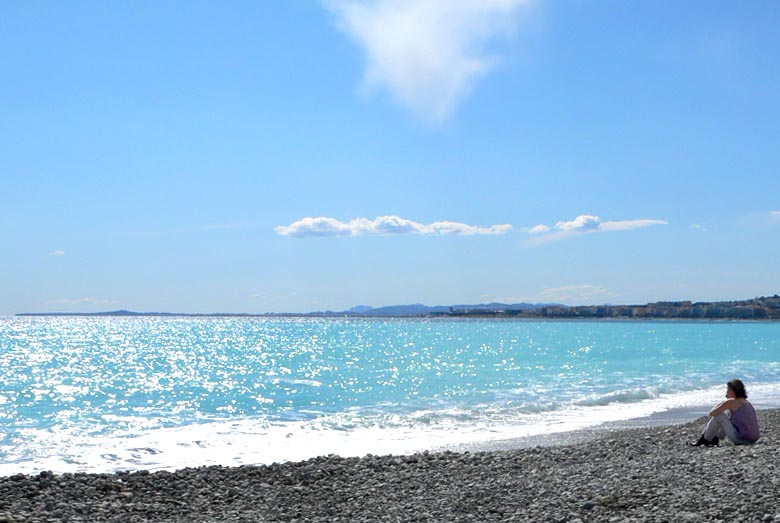

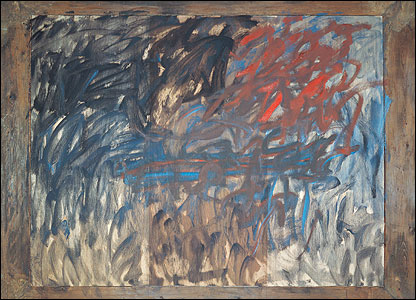


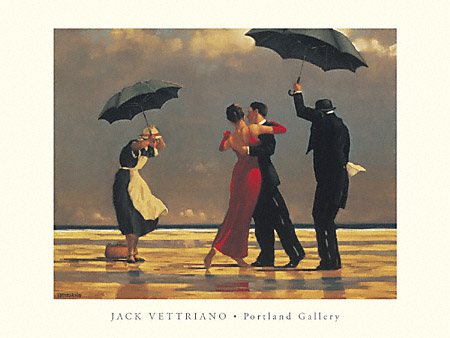
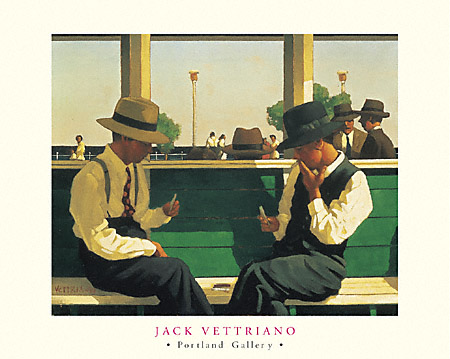
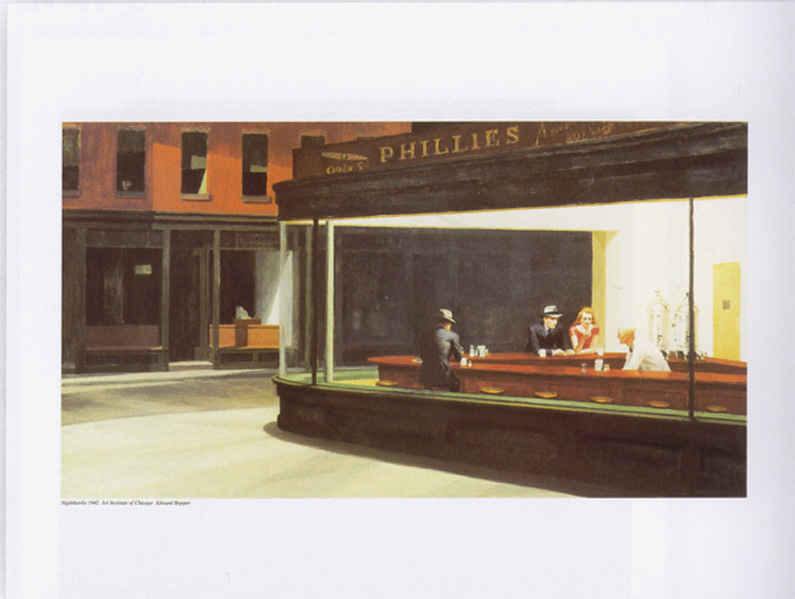
No comments:
Post a Comment